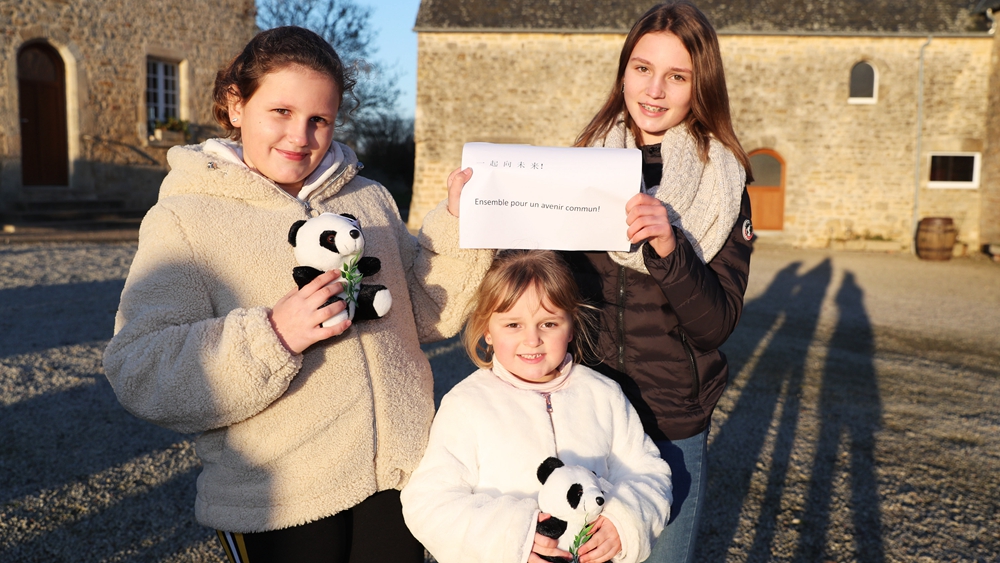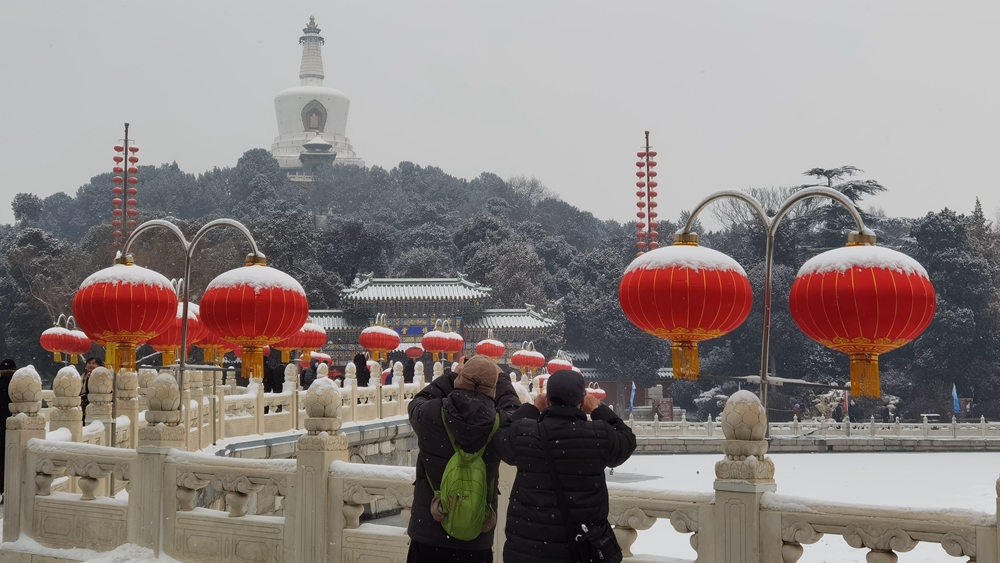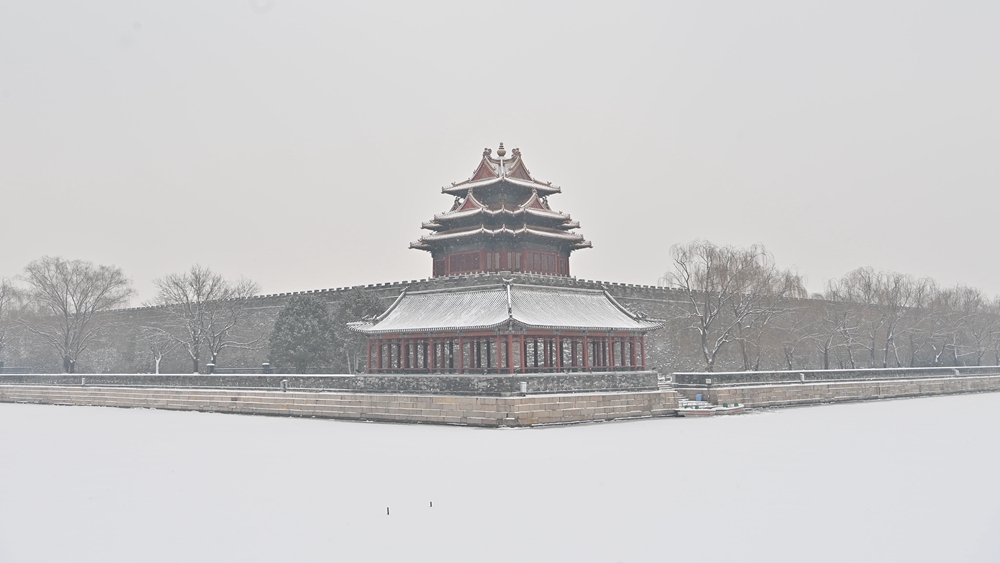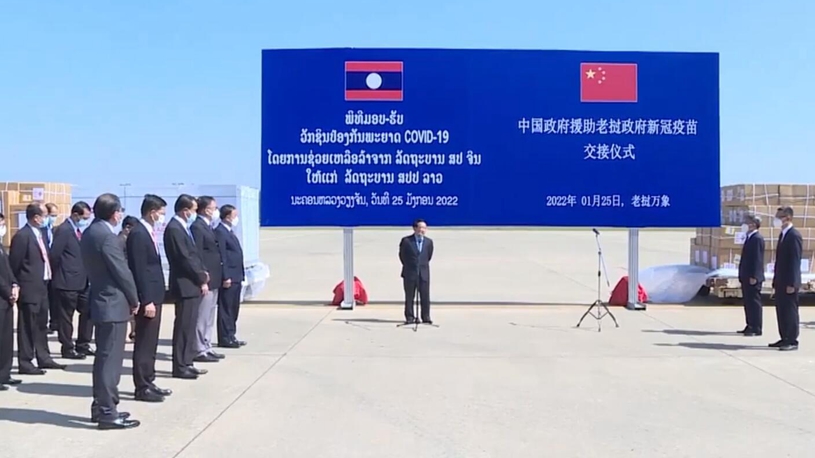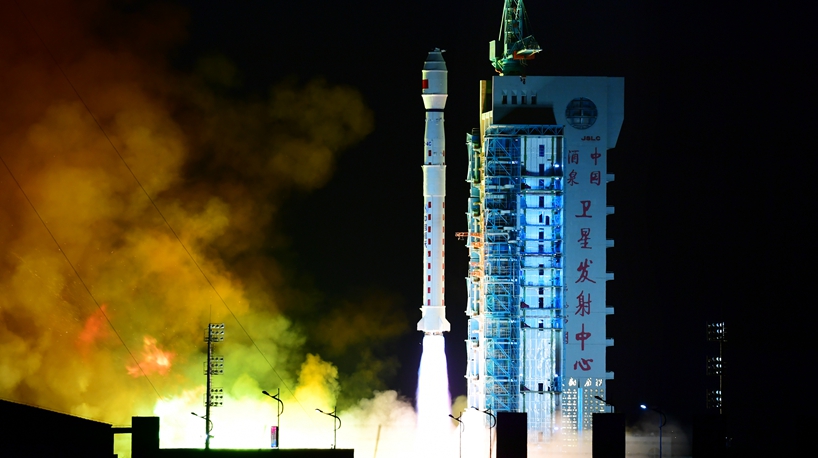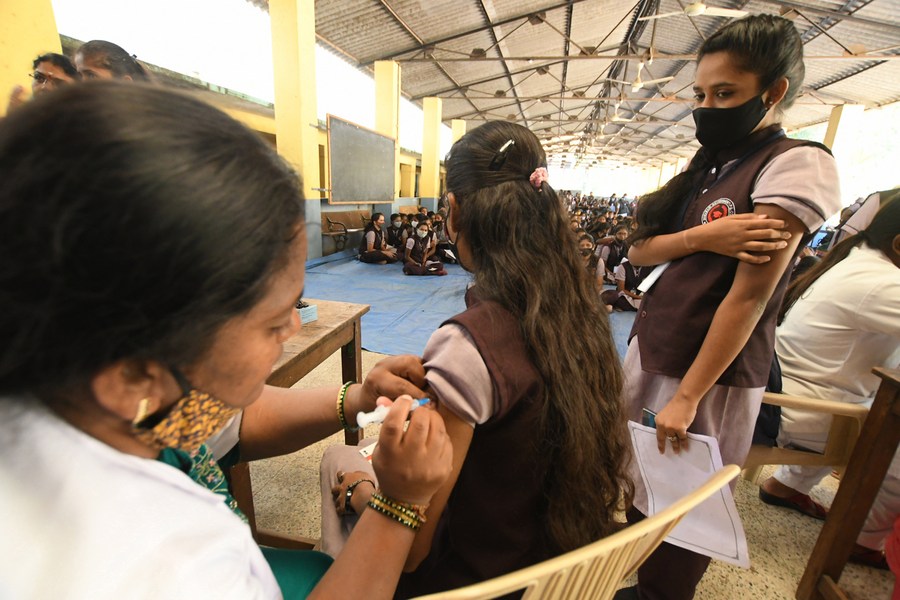
A girl receives a dose of COVID-19 vaccine in Bangalore, India, Jan. 3, 2022. (Str/Xinhua)
The Asia-Pacific region witnessed a sudden spike in new COVID-19 cases and deaths amid the spread of more contagious Omicron variant. Many countries in the region believe that vaccines are still the first line of defense, and are accelerating booster campaigns and vaccinating children.
by Xinhua writer Wu Junyi
HONG KONG, Jan. 28 (Xinhua) -- The rapidly spreading Omicron variant is fueling new infection waves and putting many Asia-Pacific countries, which have paused for breath in the last quarter of 2021, in a tough situation.
Just after a holiday season filled with gatherings and travels, many countries, which have witnessed a sudden spike in new COVID-19 cases and deaths, are now grappling with the more contagious variant, with mandatory mask-wearing, social distancing, and even lockdowns back in place.

A medical worker shows a negative COVID-19 antigen test result during an at-home COVID-19 antigen testing in Quezon City, the Philippines on Jan. 10, 2022. (Xinhua/Rouelle Umali)
DANGEROUS VIRUS
"Let's be clear: While Omicron causes less severe disease than Delta, it remains a dangerous virus, particularly for those who are unvaccinated," World Health Organization (WHO) Director-General Tedros Adhanom Ghebreyesus said in mid-January.
Daily cases in the Philippines, Australia and Japan have surged to record highs.
In the Philippines, Omicron has replaced Delta as the dominant variant, as more and more people, including those wearing masks and the vaccinated, are contracting the variant.
Japan's daily cases topped 70,000 on Wednesday for the first time, compared to the previous peak of 25,992 in August 2021.
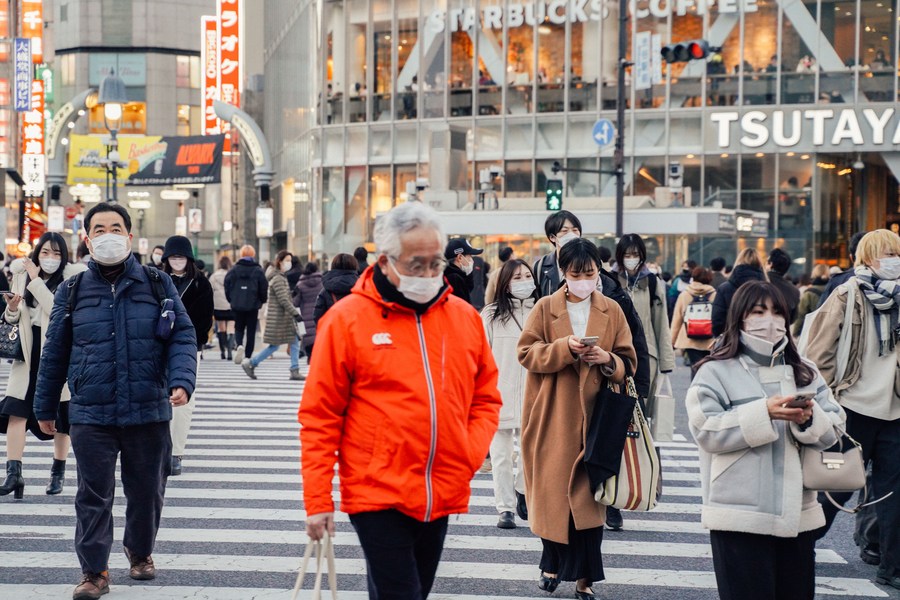
People wearing face masks walk through the Shibuya scramble crossing in Tokyo, Japan, Jan. 21, 2021. (Xinhua/Zhang Xiaoyu)
India reported over 300,000 daily COVID-19 cases for five consecutive days in January. The Indian SARS-CoV-2 Genomics Consortium said that Omicron is currently in community transmission in the country and has become dominant in multiple cities.
Massive surges in cases and hospitalization, fueled by both the Omicron and Delta variants, are putting a heavy burden on healthcare systems in the Asia-Pacific region, after many healthcare workers and laboratory technicians contracted the virus and needed to isolate.
"Every third doctor is either symptomatic or positive. There is an acute shortage of staff. And there is an acute crisis," Dr. Anuj Aggarwal at New Delhi's Safdarjung Hospital, one of India's largest government hospitals, was quoted as saying by media on Jan. 10.

Street mask vendors are pictured amid a fresh surge in COVID-19 cases in Dhaka, Bangladesh, Jan. 12, 2022. (Xinhua)
Bangladesh, Nepal and Pakistan, among others, have also witnessed cases skyrocketing amid the spread of Omicron.
In Bangladesh's capital Dhaka, sales of face masks, gloves and sanitizer, mostly made in China, have exploded in the past weeks.
"Due to soaring infections, products like masks and sprays are selling out almost as quickly as they go on the shelves," pharmacist Jobayer Hossain said.
Many Nepali families are struggling due to reduced job opportunities amid surging infections, with the monthly consumer price inflation climbed to 7.11 percent in December, the highest in 64 months.
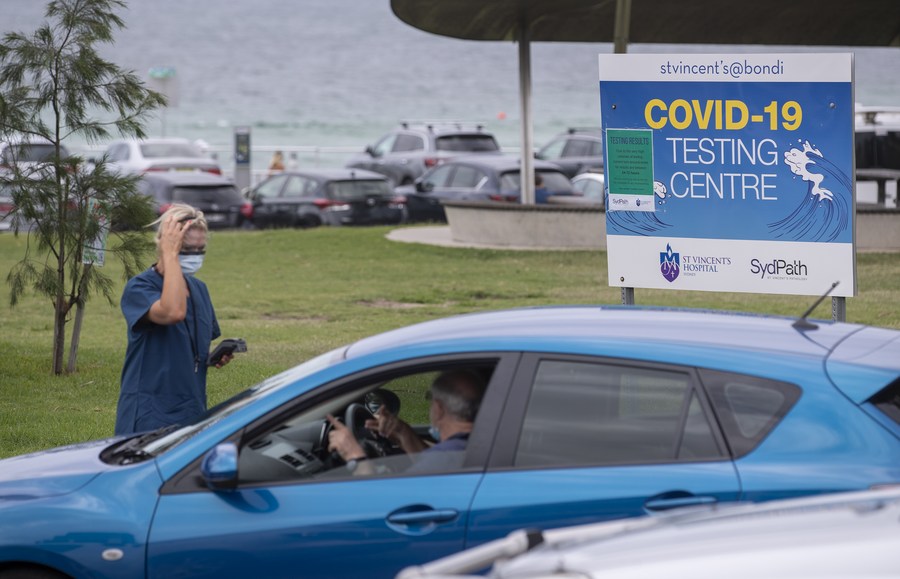
People wait for COVID-19 tests at a testing site in Sydney, Australia, Jan. 9, 2022. (Xinhua/Bai Xuefei)
WORST TIMING
Experts have attributed the recent COVID-19 surges to high mobility during the holiday season, poor compliance with health protocols, and the high transmission rate of Omicron.
"It's just really been the worst timing you could possibly have for Omicron to come essentially," Nancy Baxter, head of Melbourne University's School of Population and Global Health, told Xinhua recently.
"Omicron came quite early to Australia," she said. "One of the reasons why we have peaked so high here is because unfortunately, it coincided with plans for reopening and the Christmas season."
Some countries, including Australia, began the march to reopening the economy after achieving high vaccination rates late last year, shortly before the Omicron variant started to sweep across the world.
Although many countries have declared they would prepare for the Omicron variant since late November, the virus is "more formidable" than first thought as described by Japanese Prime Minister Fumio Kishida.
Earlier this month, Japanese officials blamed cluster infections at multiple U.S. military bases for the Omicron surge in Japan.
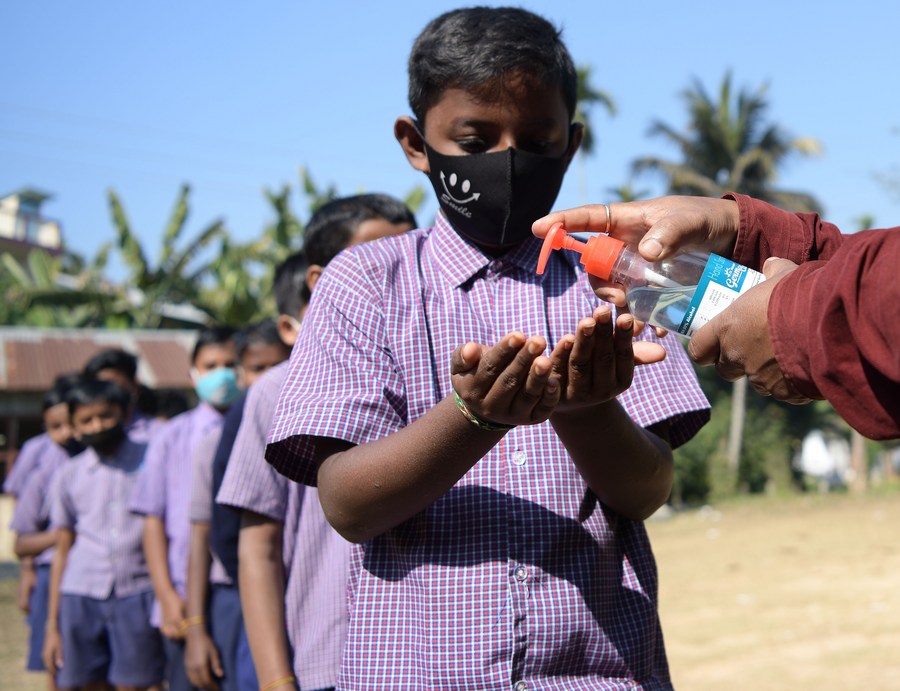
Students sanitize their hands before entering classroom at a school in Agartala, the capital city of India's northeastern state of Tripura, Jan. 8, 2022. (Str/Xinhua)
Sanjeev Dimri, a microbiologist at the Saraswathi Institute of Medical Sciences, said "in my opinion, people in India had become complacent after taking two doses of vaccines and started flouting COVID-19 norms. Most of these cases were asymptomatic and spread to others, particularly when the carriers traveled by trains and flights."
Officials and experts are trying to figure out when the current wave in their countries will peak.
Australia's Chief Medical Officer Paul Kelly said in mid-January that he was optimistic that the country's Omicron outbreak was close to its peak, as national daily cases showed a downward trend in the following days. However, Aussie experts worried that there would be further spread, and hospitalizations and deaths have yet to peak.
Philippine Health Secretary Francisco Duque said the Omicron-fueled surge in metro Manila has peaked, though experts warned that infections in regions outside the capital will continue to rise.
"Ideally, what we would do is we'd ensure that people continue to wear masks," Baxter said. "And we need to have much, much more rapid triggers for some public health measures when cases get high."

A health worker administers a dose of COVID-19 vaccine to a boy during a vaccination campaign for children aged 6 to 11 at Serua village in South Tangerang, Banten Province, Indonesia, Jan. 27, 2022. (Xinhua/Agung Kuncahya B.)
BOOSTING BOOSTERS
Facing the Omicron challenge, many in the region believe that vaccines are still the first line of defense against the virus, thus highlighting the necessity to accelerate booster campaigns and vaccinate children.
Japan, Indonesia and the Philippines, among others, are expediting booster shots, while Australia and India have extended their vaccination coverage to younger groups.
Furthermore, Cambodia has rolled out its fourth dose program to priority groups in Phnom Penh in response to the Omicron variant.
Meanwhile, governments are trying to introduce more flexible anti-infection measures, given many valuable lessons learned from the past two years.
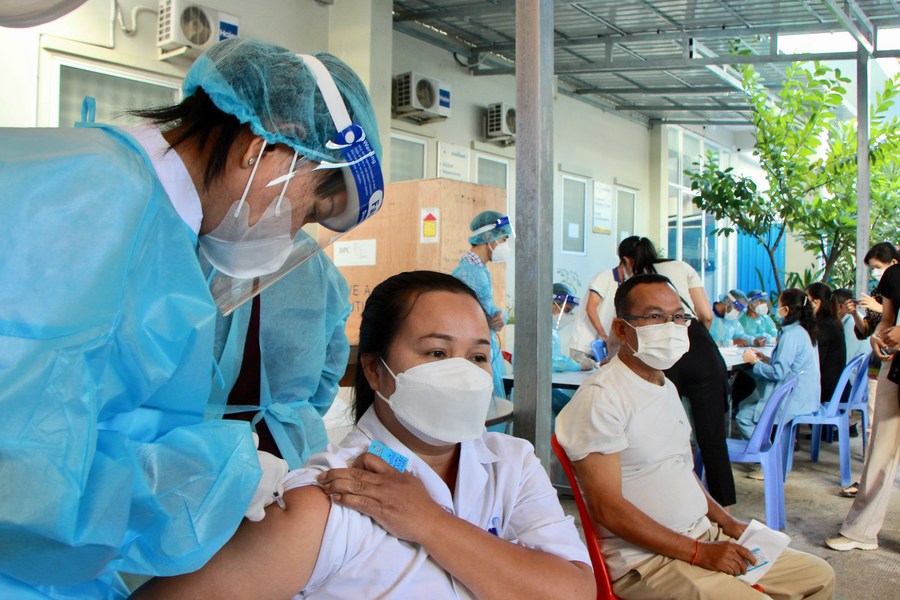
A woman receives her fourth dose of COVID-19 vaccine at an inoculation site in Phnom Penh, Cambodia on Jan. 14, 2022. (Photo by Phearum/Xinhua)
Japan has put 34 out of 47 prefectures under a quasi-state of emergency. Officials said the entry ban on non-resident foreigners will be kept in place until the end of February.
Authorities in several Indian states are bringing in restrictions like night curfews, lowered the cap on gatherings and closed shopping malls and recreational venues.
Hundreds of areas in metro Manila and other parts of the Philippines with high virus clusters are under granular lockdown.
In contrast, there are limits on gatherings but no lockdowns in New Zealand after it moved to Red Light settings due to Omicron cases detected in the community.
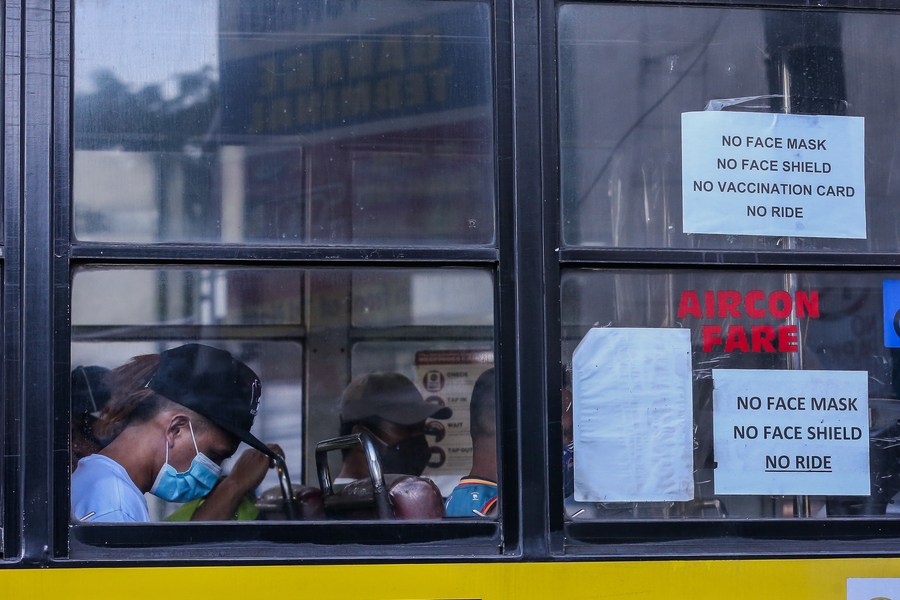
Signs on COVID-19 prevention measures are posted on a public bus in Quezon City, the Philippines, Jan. 17, 2022. (Xinhua/Rouelle Umali)
Some countries are also aiming to ease the burden on hospitals.
A "code brown" in the Australian state of Victoria gives hospitals the power to defer non-urgent health services and redeploy staff to areas of the greatest need.
India and Indonesia are bolstering teleconsultation services for mild or asymptomatic COVID-19 patients in home isolation, while Cambodia allows all Omicron patients to get treatment at home if they want. Enditem
(Jacob Tomkins in Sydney, Pankaj Yadav and Zhao Xu in New Delhi, and Dario Agnote, Liu Kai and Yan Jie in Manila also contributed to the story.) ■



